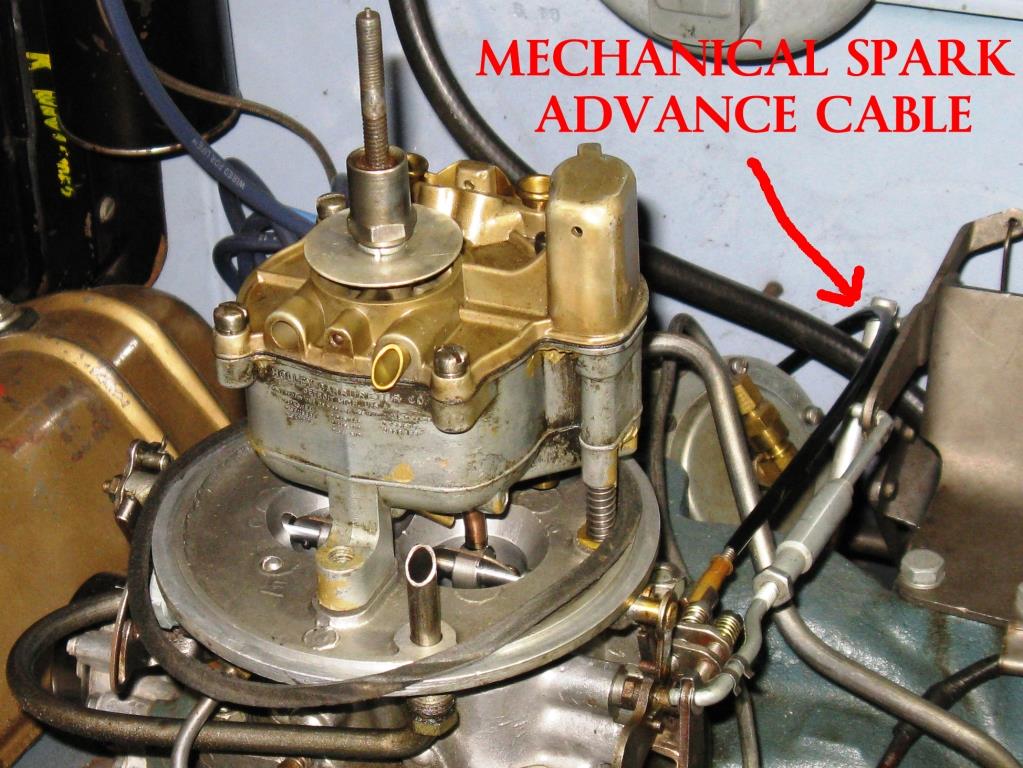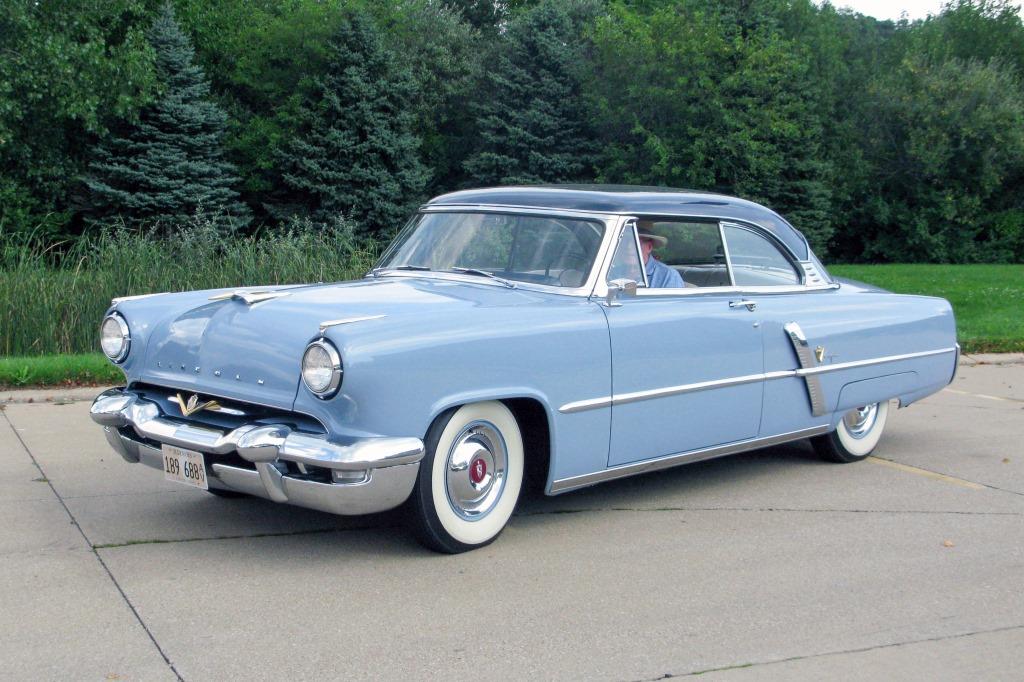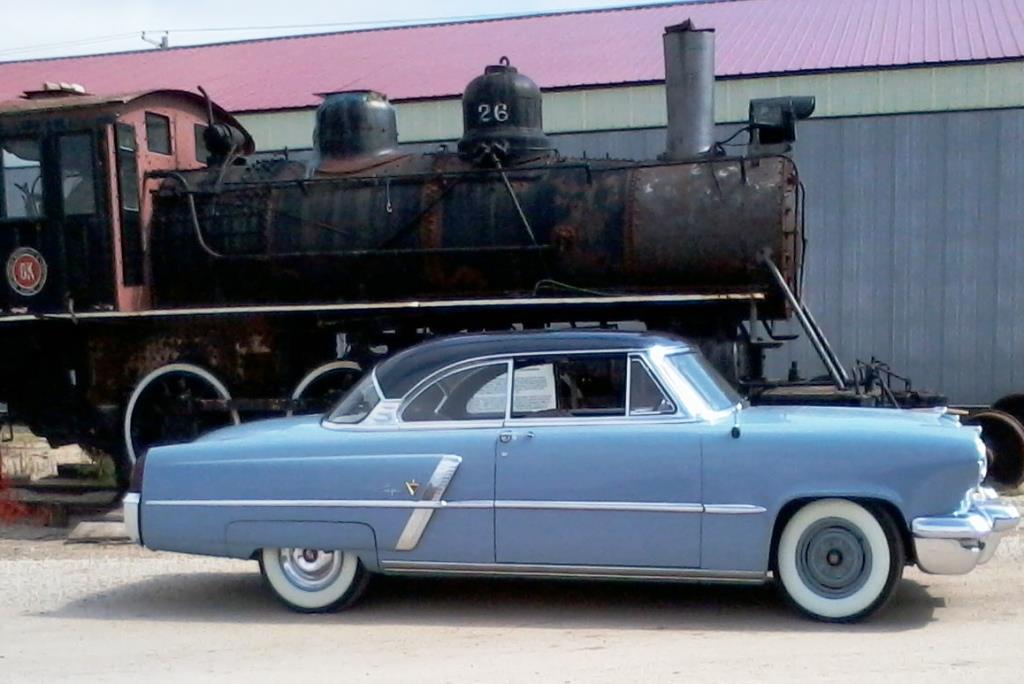Owning a Low Mileage Unrestored Lincoln
By Tom O’Donnell
Previously I told you about my search and how I found my 1953 Lincoln Capri
Coupe. It was purchased by me with
38,520 original miles and its condition reflected its low mileage.
It was delivered to my home in early February 2014 and I did not have
enough garage room to do any work on it, so it was covered up until the warmer
months. I found a good garage to
store my 1940 Mercury, so the Lincoln shared garage space with my unrestored
52,000 mile Cutlass Convertible.
When spring arrived, I started to work on the problems that I had noticed during
the pre-purchase inspection. The
car was hard starting after sitting, the transmission would snap your neck when
it shifted and the brake pedal was very low.
The paint also needed a good cleaning as it had water spots etched into
it.
I started with the hard starting.
The first thing was to check the automatic choke.
It would not close. I took
the thermal spring housing off and found the spring in backwards.
After re-assembling it correctly the choke now closed.
Next on the agenda was checking the ignition system for good spark,
correct point dwell, point resistance and spark plug cleanliness.
These were all good, so I checked the timing.
I could not get the engine to idle down to 400-425 RPM.
Any time that I got below 550 RPM, the engine died.
Checking around, I saw that the choke did not open completely when the
engine was warm. I adjusted it so
that it did open and then was able to adjust the idle and time the engine.
The timing was way off, so I brought it back to specs.
Now the engine started with 1or 2 turns with the starter.
I took it for a test drive and it had much more pep than when I test
drove it in North Carolina.


I let the car sit overnight and went to start it the next day.
It still would not start right up.
I looked at the choke and it was not closing.
I took off the choke spring and checked the operation of the choke; it
was binding, due to bent linkage. I
repaired the linkage and put the spring housing back on.
The engine started right up and the choke opened almost all of the way
when warm. I ordered a new choke
spring and started a search for a good carburetor core to rebuild.
The new spring fixed the choke problem and the engine started up when
cold or warm. It was while trying
to start the engine with the bad choke spring that I found out why people call
the Holley Carburetor the “Flame Thrower”.
I had the air cleaner off and floored the gas pedal to clear the
flooding. The engine back fired due
to the advanced timing and started the carburetor on fire.
I was able to extinguish it before any damage was done.
The tying of the mechanical advance to the accelerator linkage was a bad
idea that was abandoned in 1954.
Now I could get to the hard shifting.
I adjusted the throttle valve rod according to the book, but it still
shifted hard and missed the 1-2 shift most of the time.
Backing off the adjustment 1 turn solved that problem, but had me
wondering why I had to maladjust the throttle valve rod.
Then all of a sudden it sounded like the engine was going to destruct.
There was a sharp knock coming from the right bank.
I spent the next few days trying to isolate the problem and asked a local
mechanic to stop over and give me his opinion.
His opinion was that I needed a complete engine rebuild and he might as
well rebuild the hydra-matic at the same time.
His estimate was between $15,000 and $25,000 and he could not guarantee
the he could stay within those parameters.
I politely thanked him for his time and told him that I would get back to
him (sometime in the future when I was completely senile).
I started thinking about all of the problems that I have had with cars in the
past and decided that I was going to crawl under the car with a mechanic’s
stethoscope and try to isolate the problem further.
The noise was definitely coming from no. 2 cylinder and it was near where
the block and head join. The valves
were all working fine, so that left me with the possibility of a broken piston
or a carbon knock. I decided that I
had nothing to lose, so I got a glass of water and dribbled it down the
carburetor until the engine stopped.
I let it sit overnight and when I started the engine the noise was just
audible. I bought a can of Seafoam
spray and sprayed it in the carburetor until the engine died.
(I was doing this on a weekday when all of my neighbors were at work).
The next day, when I started the engine, I could not hear the knock.
I put 2 cans of Seafoam in the tank, where I had about 5 gallons left,
and drove it very aggressively on the Interstate, leaving a cloud of smoke
behind me. The engine now sounded
like new.
I was so happy that I forgot to turn the battery disconnect switch.
I remembered it as I was getting into bed.
I thought that it should be no big deal to leave it overnight.
When I tried to start it the next day, all I got was a grunt before the
battery died. I pushed the Lincoln
out of the garage, so I could get to the underfloor battery, removed it and
placed it on my charger. When the
battery was charged, I put it back in the car but left the NEG cable
disconnected. I connected my test
light clamp to the cable and touched the point to the battery post.
The light came on, indicating a short.
I started to remove wires after labeling them and found that when I
disconnected the alternator, the light would not come on.
I don’t like modifications on my car, so I checked out the generator that
came with the car. The rear bushing
was worn, so I rebuilt the generator and installed it.
Since then, I have found that the clock will drain the battery in about 5
days, so I keep a battery maintainer on the car.
Now that the car would go, I needed to make sure it would stop.
I jacked it up, pulled the left front drum to check the shoes and drum
for wear, replaced the drum as everything was like new and started to adjust the
brakes. Everything was fine until I
got to the right rear. I could not
get the adjusting tool on the adjusting star.
I pulled the drum and saw that the adjuster was installed backwards.
The shoes and other parts looked like new here also.
I reassembled and finished with the adjustment.
I also installed a 3rd
brake light in the rear window. The
light is held in place by magnets and the wires are routed under the rear seat
speaker. This was done so I did not
have to make any holes and the next owner could restore the car to original
easily.
My car would now go and stop, so I proceeded to clean the paint.
After 2 passes with Meguiar's Fine Cut Cleaner, Show Car Glaze and Yellow
Wax, my beautiful car shone like new, but I could still see some of the water
spots. I decided to ignore them as
I wanted to enjoy the car for a while and I needed to get serious about selling
my Cutlass Convertible. I do not
have room for 3 collector cars and at my age, keeping them in good condition is
a lot more than I could handle.
In August of 2014, I took the Lincoln to the Early Ford V-8 Club of America
central National Meet. The car was
entered in the Rouge Class and was awarded a trophy certifying originality in
exterior, interior and running gear.
I also learned a little more of the history of the car.
The original owner bought the car for his wife.
She only drove it on Sundays when the weather was nice.
The car had its oil changed and was greased every 3 months.
When Don Johnson bought the car in the late 1980’s it had just over 3,000
miles. It had not been used for
several years as the owner was unable to handle the car.
Don went through the mechanicals of the car and rebuilt all of the brake
cylinders, replaced the rubber hoses and changed the brakes to DOT 5 fluid.

In September of 2014, I entered the car in the Primary Division of the LCOC
Central Meet in Rockford, IL. It
scored a first place, with 97 points, even though I had lost a hubcap and
watched a semi flatten it on the way to the meet.
I met another guy that knew the car from new, but he was busy looking at
the more modern Continentals and we did not have much time to chat.

In 2016, I went to the Road Race Lincoln Meet at the Gilmore Museum.
We had a very good time there and met many other Lincoln owners.
The twin to my car from Maryland was there along with a nice 1953
Cosmopolitan Sport Coupe. This is
more 1953 Lincolns that I have seen together since the 1960’s used car lot.

Overall, I am very pleased with my purchase.
The car is beautiful, it runs great now and I have no qualms about going
on the road with it. Dale Benjamin
was a great person to do business with, he let me know all that he had done to
the car and kept in touch with me when I was having the engine noise problem.
My wife, Madeleine, is the one that got me off of my duff to check out
the car and buy it, and she enjoys going on trips in it.
I have found that most people who say they can fix problems on my car get
scared when they start and always seem to break something.